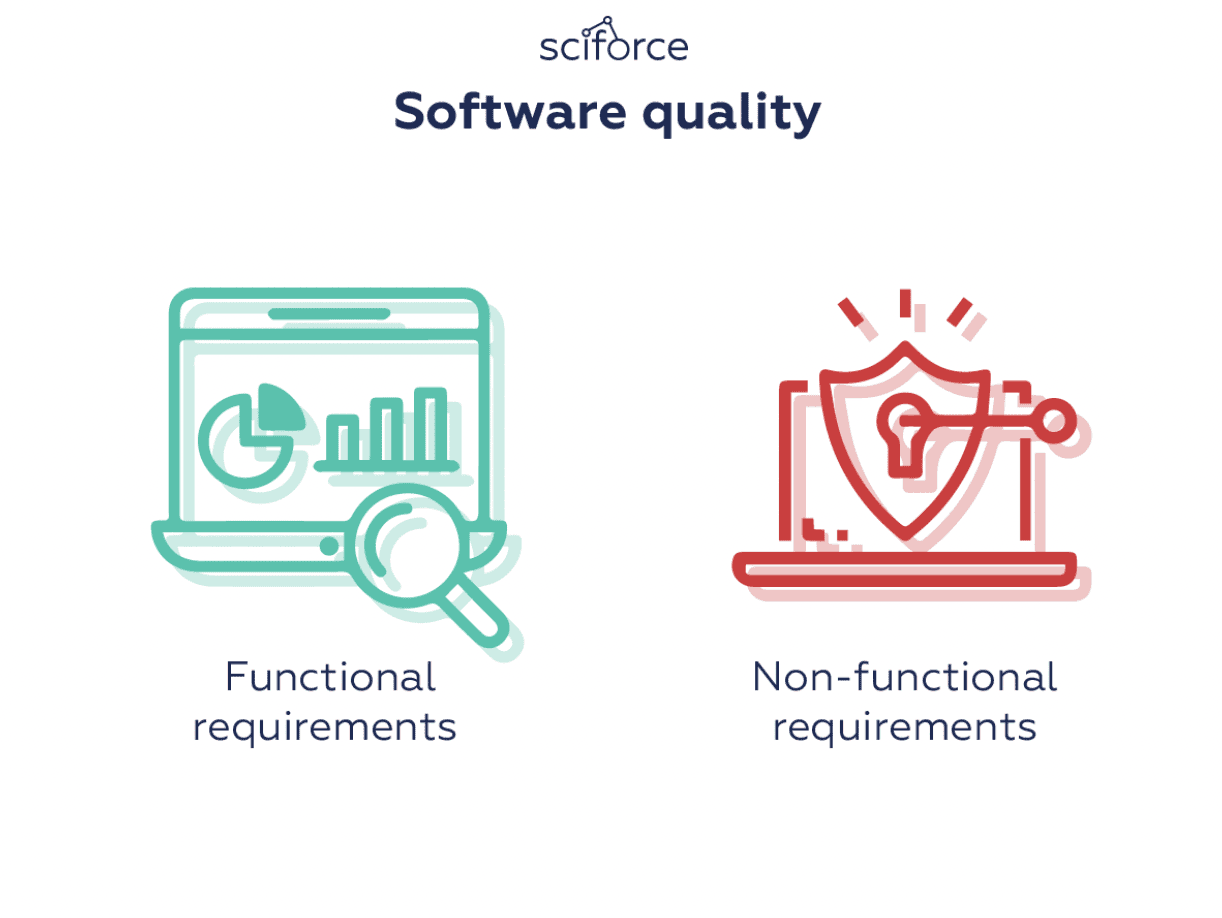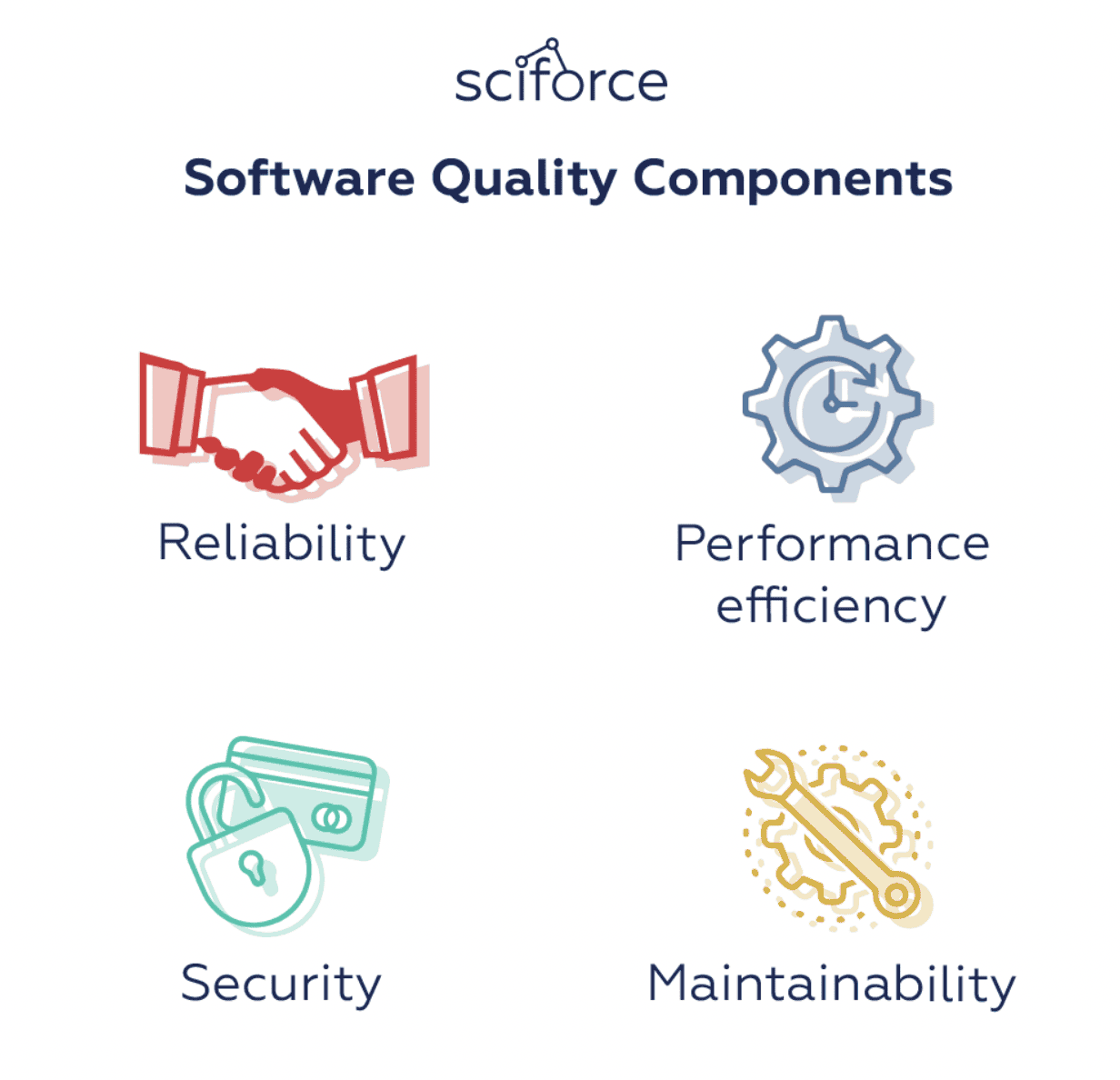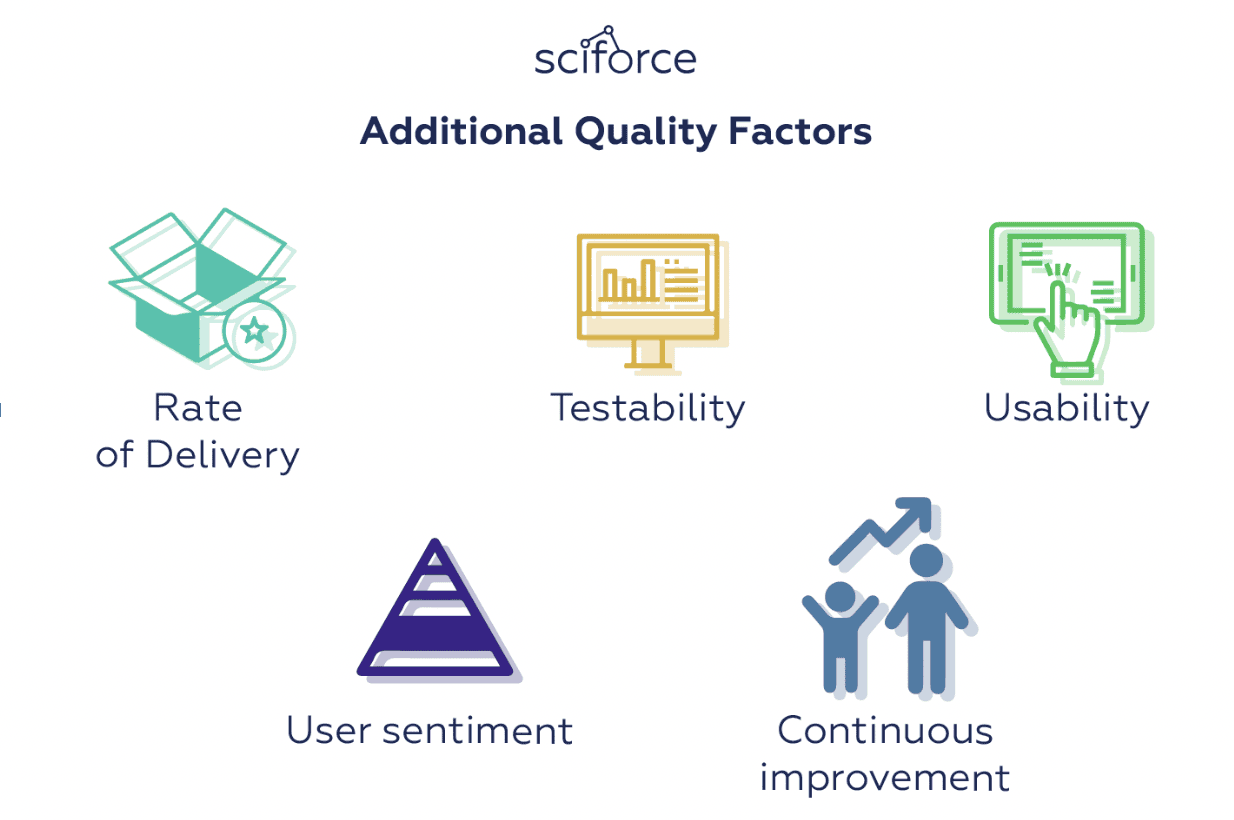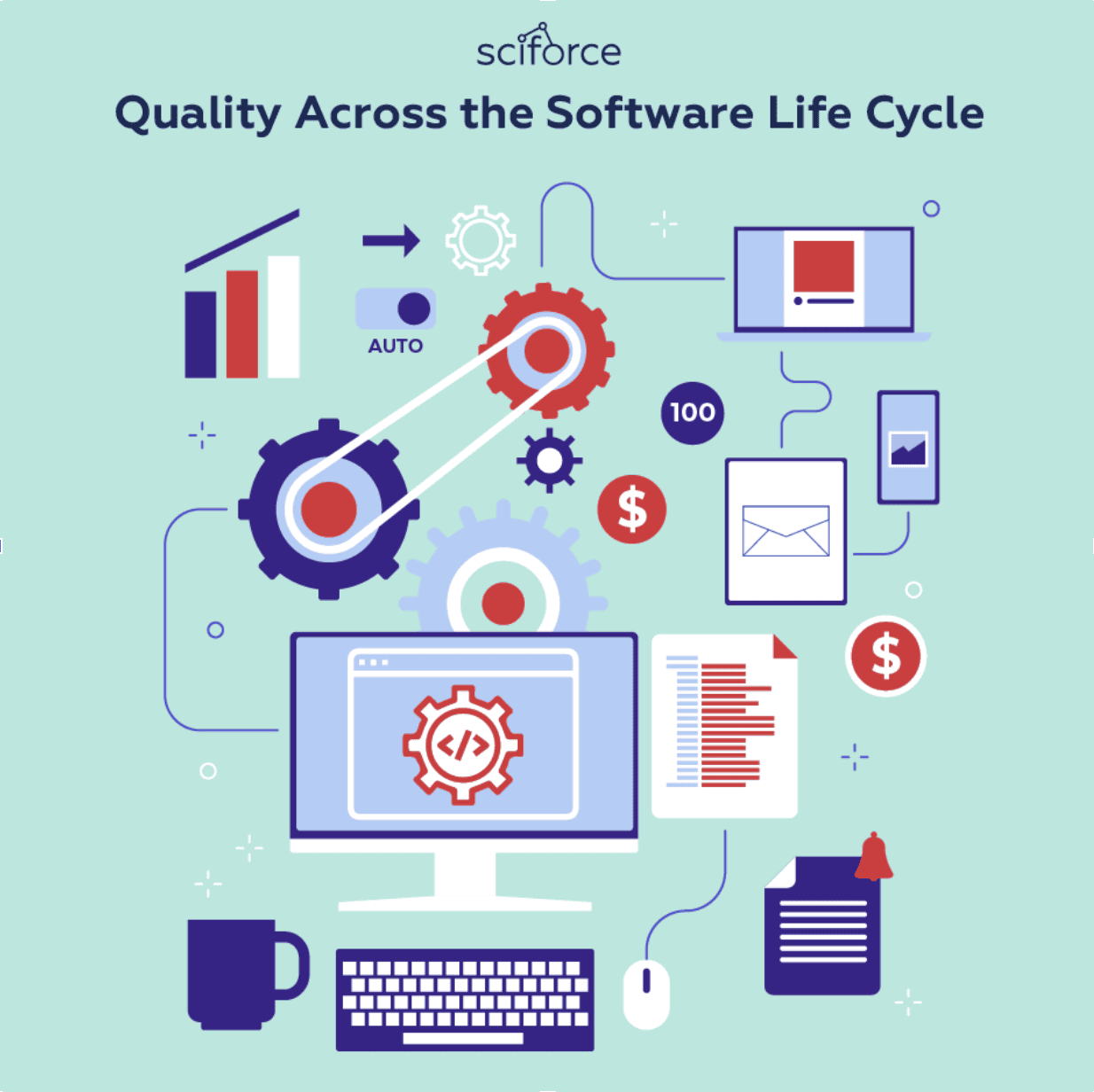Software development companies are always under pressure to launch their software onto the market faster, as releasing ahead of the competition gives advantage which can be vital. Fast release times and more frequent releases can, at the same time, corrupt the quality of the product, increasing the chances of defects and bugs. It is quite a common debate in software development projects to choose between spending time on improving software quality versus releasing more valuable features faster. The pressure to deliver functionality often cuts off time that can be dedicated to working on architecture and code quality.
However, reality shows that high-performing IT companies can release fast (Amazon, for example, unfolds new software for production through its Apollo deployment service every 11.7 seconds) with 60 times fewer failures. So, do we actually need to choose between quality, time, and price?

Software quality refers to many things. It measures whether the software satisfies its functional and non-functional requirements:
Functional requirements specify what the software should do, including technical details, data manipulation, and processing, or any other specific function.
Non-functional requirements, or quality attributes, include things like disaster recovery, portability, privacy, security, supportability, and usability.

To understand the software quality, we can explore the CISQ software quality model that outlines all quality aspects and relevant factors to get a holistic view of software quality. It rests on four important indicators of software quality:
Reliability – the risk of software failure and the stability of a program when exposed to unexpected conditions. Quality software should have minimal downtime, good data integrity, and no errors that directly affect users.
Performance efficiency – an application’s use of resources and how it affects the scalability, customer satisfaction, and response time. It rests on the software architecture, source code design, and individual architectural components.
Security – protection of information against the risk of software breaches that relies on coding and architectural strength.
**Maintainability **– the amount of effort needed to adjust software, adapt it for other goals or hand it over from one development team to another. The key principles here are compliance with software architectural rules and consistent coding across the application.

Of course, there are other factors that ensure software quality and provide a more holistic view of quality and the development process.
Rate of Delivery – how often new versions of the software are shipped to customers.
Testability – finding faults in software with high testability is easier, making such systems less likely to contain errors when shipped to end-users.
Usability – the user interface is the single part of the software visible to users, so it’s crucial to have a great UI. Simplicity and task execution speed are two factors that facilitate better UI.
**User sentiment **– measuring how end-users feel when interacting with an application or system helps companies get to know them better and incorporate their needs into upcoming sprints and ultimately broaden your impact and market presence.
Continuous improvement – implementing the practice of constant improvement processes is central to quality management. It can help your team develop its own best practices and share them further, justify investments, and increase self-organization.
There are obviously a lot of aspects that describe quality software, however, not all of them are evident to the end-user: a user can tell if the user-interface is good, an executive can assess if the software is making the staff more efficient. Most probably, users will notice defects or certain bugs and inconsistencies. What they do not see is the architecture of the software.
Software quality can thus fall into two major categories: external (such as the UI and defects) and internal (architecture): a user can see what makes up the high external quality of a software product, but cannot tell the difference between higher or lower internal quality. Therefore, a user can judge whether to pay more to get a better user interface, since they can assess what they get. But users do not see the internal modular structure of the software, let alone judge that it's better, so they might be reluctant to pay for something that they neither see, nor understand. And why should any software-developing company put time and effort into improving the internal quality of their product if it has no direct effect?
When users do not see or appreciate extra efforts spent on the product architecture, and the demand for software delivery speed continues to increase along with the demand for reduction in costs, companies are tempted to release more new features that would show progress to their customers. However, it is a trap that reduces the initial time spent and the cost of the software but makes it more expensive to modify and upgrade in the long run.
One of the principal features of internal quality is making it easier to figure out how the application works so developers can add things easily. For example, if the software is divided into separate modules, you can read not the whole bunch of code, but look through a few hundred lines in a couple of modules to find the necessary information. More robust architecture – and therefore, better internal quality, will make adding new features easier, which means faster and cheaper.
Besides, software's customers have only a rough idea of what features they need in a product and learn gradually as the software is built - particularly after the early versions are released to their users. It entails constant changing of the software, including languages, libraries, and even platforms. With poor internal quality, even small changes require developers to understand large areas of code, which in turn is quite tough to understand. When they perform changes, unexpected breakages happen, leading to long test times and defects that need to be fixed.Therefore, concentrating only on external quality will yield fast initial progress, but as time goes on, it gets harder to add new features. High internal quality means reducing that drop off in productivity.

But how can you achieve high external and internal quality when you don't have endless time and resources? Following the build life cycle from story to code on a developer desktop could be an answer.While performing testing, use automation through the process, including automated, functional, security, and other modes of testing. This provides teams with quality metrics and automated pass/fail rates.
When your most frequent tests are fully automated and only manual tests on the highest quality releases left, it leads to the automated build-life quality metrics that cover the full life cycle. It is enabling developers to deliver high-quality software quickly and reduce costs through higher efficiency.
Neglecting internal quality leads to rapid build-up of work that eventually slows down new feature development. It is important to keep internal quality high in the light of having control, which will pay off when adding features and changing the product.
Therefore, to answer the question in the title, it is actually a myth that high-quality software is more expensive, so no such trade-off exists. And you definitely should spend more time and effort on building robust architecture to have a good basis for further development – unless you are just working on a college assignment that you’ll forget in a month.